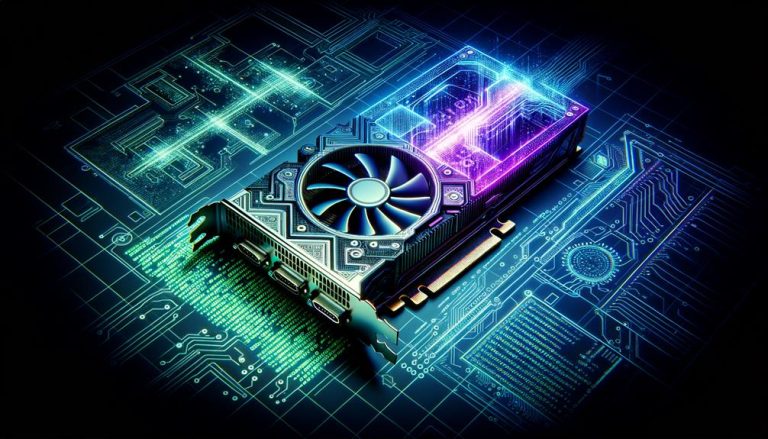Welcome to our article where we explore how lidar technology is evolving and expanding beyond its traditional use in the automotive industry.
Lidar, short for Light Detection and Ranging, has become an essential tool for autonomous vehicles, enabling them to accurately perceive and navigate their surroundings.
But lidar's capabilities go beyond just automotive. It's revolutionizing various industries, enhancing efficiency, and providing real-time solutions.
Join us as we delve into the smart advancements and diverse applications of lidar technology.
Lidar's Role in Autonomous Vehicles
Lidar plays a crucial role in the autonomy of vehicles. With its ability to measure distances using laser pulses, lidar sensors provide accurate environmental perception, making them essential for autonomous vehicles to perceive their surroundings. As the demand for autonomous transportation grows, lidar technology has undergone significant developments, becoming a crucial safety component.
This innovative technology isn't limited to the automotive industry; it's expanding into diverse sectors. Lidar-based volume monitoring solutions automate data integration into inventory management systems, while lidar sensors excel in intruder detection for security systems. In crowd management, lidar is instrumental in tracking movement patterns, and in tourist destinations, it monitors visitor numbers and provides real-time suggestions.
Thanks to technological advancements, lidar sensors have become more powerful, cost-effective, and user-friendly. Solid-state lidar technology, eliminating the need for mechanical components, has revolutionized the field. Lidar sensors create highly precise 3D representations of the surroundings, allowing for accurate spatial representations and determining object size.
Unlike cameras, lidar provides direct distance information, making it beneficial for accurate distance measurements and collision avoidance. With lidar's forward-thinking capabilities, the future of autonomous vehicles looks promising.
Lidar's Expansion Into Various Industries
In our exploration of lidar technology, we are witnessing its expansion into various industries beyond the automotive sector. Lidar-based volume monitoring solutions automate data integration into inventory management systems, revolutionizing supply chain operations. The use of lidar sensors in security systems has proven to excel in intruder detection, enhancing safety measures. In the realm of crowd management, lidar technology tracks movement patterns, enabling efficient crowd control. Additionally, tourist destinations are utilizing lidar to monitor visitor numbers and provide real-time suggestions for a personalized experience. This expansion of lidar into diverse industries demonstrates its versatility and potential for innovation. With lidar's ability to provide accurate spatial information, its applications are limitless in creating smarter and more efficient solutions for industries worldwide.
| Industry | Lidar Application |
|---|---|
| Supply Chain | Lidar-based volume monitoring for automated inventory management |
| Security Systems | Intruder detection for enhanced safety measures |
| Crowd Management | Tracking movement patterns for efficient crowd control |
| Tourist Destinations | Monitoring visitor numbers and providing real-time suggestions |
| Various Industries | Lidar's versatility and potential for innovation |
Advancements in Lidar Technology
As we delve into the advancements in lidar technology, we continue to witness its transformative impact across various industries, propelling innovation and efficiency. Here are five key advancements that are shaping the future of lidar:
- Miniaturization: Lidar sensors are becoming smaller and more compact, enabling their integration into a wider range of applications, including wearables, drones, and IoT devices.
- Increased Range: With advancements in laser technology, lidar sensors can now detect objects at longer distances, improving their effectiveness in autonomous vehicles, surveillance systems, and environmental monitoring.
- Enhanced Resolution: New lidar systems offer higher resolution capabilities, enabling the detection of smaller objects and more detailed mapping of the environment.
- Multi-Wavelength Lidar: By using multiple wavelengths of light, lidar sensors can gather additional information about the composition and characteristics of objects, expanding their applications in agriculture, forestry, and geology.
- Integration with AI: Lidar technology is being combined with artificial intelligence algorithms to enhance object recognition, improve accuracy, and enable real-time decision-making in autonomous systems.
These advancements in lidar technology are driving the next wave of innovation, revolutionizing industries and opening up new possibilities for the future.
Different Types of Lidar Sensors
We continue to explore the advancements in lidar technology and now turn our attention to the different types of lidar sensors available in the market.
The three main types of lidar sensors are 1D, 2D, and 3D.
1D lidar sensors use a single laser pulse to measure the distance at a specific point. They're cost-effective and widely used in applications where a limited field of view is sufficient.
2D lidar sensors employ a horizontally rotating laser pulse to measure distance and motion direction. They provide additional information about the shape of objects and are commonly used in mapping, robotics, and security systems.
3D lidar sensors rotate the laser pulse both horizontally and vertically, capturing spatial data in three dimensions. This type of lidar is crucial for obtaining accurate spatial representations and determining object size. It's widely used in autonomous vehicles, drones, and advanced mapping applications.
These different types of lidar sensors offer a range of capabilities and are driving innovation in various industries, beyond just automotive.
Lidar Vs. Image Recognition
Moving beyond the discussion of different types of lidar sensors, let's now explore the comparison between lidar and image recognition.
- Lidar sensors provide direct distance information, unlike cameras.
- Cameras primarily capture light and color details but don't measure spatial information.
- 3D lidar offers faster and more precise spatial information for autonomous vehicles and drones.
- AI-supported software can derive 3D information from camera data, but lidar provides direct spatial information.
- Lidar is beneficial for accurate distance measurements and collision avoidance.
Lidar and image recognition are two powerful technologies that complement each other in the field of perception. While image recognition excels in capturing visual details, lidar goes beyond by providing direct spatial information. By combining the strengths of both technologies, we can achieve a comprehensive understanding of the environment.
This fusion enables more accurate and efficient object detection, path planning, and collision avoidance. As lidar technology continues to evolve, it will further enhance the capabilities of autonomous systems, paving the way for a safer and more intelligent future.
Applications of Smart Lidar Technology
Building upon the comparison between lidar and image recognition, let's now delve into the diverse applications of smart lidar technology.
The potential of smart lidar extends far beyond the automotive industry. In agriculture, lidar sensors can revolutionize crop monitoring and yield optimization by providing detailed information about plant health and growth patterns.
In urban planning, lidar can assist in creating accurate 3D models of cities, enabling better infrastructure development and disaster management.
Smart lidar also has immense potential in robotics, aiding in navigation and object detection for autonomous machines.
Additionally, lidar can enhance the capabilities of drones, enabling precise mapping, inspection, and delivery services.
The applications of smart lidar technology are vast and hold the power to transform various industries by providing unparalleled spatial awareness and accurate data for decision-making.
Future Trends and Developments in Lidar
Continuing the exploration of smart lidar technology, the future of lidar holds promising advancements and innovations across various industries. Here are some exciting trends and developments to look forward to:
- Miniaturization: Lidar sensors will become smaller and more compact, enabling their integration into smaller devices such as drones and wearables.
- Increased Range and Resolution: Future lidar sensors will have wider detection ranges and higher resolutions, allowing for more detailed and accurate 3D mapping and object detection.
- Integration with AI: Lidar technology will be enhanced by the integration of artificial intelligence algorithms, enabling faster and more efficient data processing and analysis.
- Multi-Sensor Fusion: Lidar will be combined with other sensing technologies like cameras and radar to create a comprehensive perception system, providing a more holistic understanding of the environment.
- Cost Reduction: Advances in manufacturing processes and economies of scale will drive down the cost of lidar sensors, making them more accessible for a wider range of applications.
These trends will revolutionize industries such as robotics, agriculture, urban planning, and more, unlocking new possibilities and transforming the way we perceive and interact with the world around us.
Häufig gestellte Fragen
How Does Lidar Technology Contribute to the Safety of Autonomous Vehicles?
Lidar technology contributes to the safety of autonomous vehicles by providing accurate environmental perception. Lidar sensors use laser pulses to measure distances, creating highly precise 3D representations of the surroundings. Unlike cameras, lidar sensors offer direct distance information, enabling faster and more precise collision avoidance.
With lidar, autonomous vehicles can perceive their surroundings in real-time, allowing for proactive decision-making and safer navigation. Lidar's advancements in power, cost-effectiveness, and user-friendliness make it an essential safety component in the evolving landscape of autonomous transportation.
What Are Some Industries Outside of Automotive That Are Utilizing Lidar Technology?
Industries outside of automotive that utilize lidar technology include:
- Volume monitoring for inventory management
- Intruder detection for security systems
- Crowd management for tracking movement patterns
- Visitor monitoring in tourist destinations
Lidar's evolution has made it more powerful, cost-effective, and user-friendly, eliminating the need for mechanical components.
Different types of lidar sensors, such as 1D, 2D, and 3D, provide varying levels of distance measurement and spatial information.
Compared to image recognition, lidar offers faster and more precise spatial information, making it crucial for collision avoidance and accurate distance measurements.
What Are Some of the Key Advancements in Lidar Technology That Have Made It More Accessible and Efficient?
Some key advancements in lidar technology have made it more accessible and efficient. Lidar sensors have become smaller, lighter, and more affordable, thanks to technological progress.
The transition from traditional mechanical lidar to solid-state lidar has eliminated the need for moving parts, reducing maintenance requirements. This evolution has also led to improved accuracy, faster data processing, and enhanced range capabilities.
These advancements have opened up new possibilities for lidar applications in various industries beyond just automotive.
How Do Different Types of Lidar Sensors, Such as 1D, 2D, and 3D, Differ in Their Capabilities?
Different types of lidar sensors, such as 1D, 2D, and 3D, differ in their capabilities.
1D lidar measures distance at a specific point.
2D lidar uses a rotating laser pulse to measure distance and motion direction, providing additional shape information.
3D lidar captures spatial data in three dimensions by rotating the laser pulse both horizontally and vertically. This is crucial for obtaining accurate spatial representations and determining object size.
These advancements in lidar technology have opened up new possibilities beyond just automotive applications.
What Are the Advantages of Using Lidar Over Image Recognition Technology in Autonomous Vehicles and Drones?
Using lidar technology in autonomous vehicles and drones offers several advantages over image recognition.
Lidar sensors provide direct distance information, allowing for faster and more precise spatial awareness.
Unlike cameras, lidar can accurately measure object size and provide accurate collision avoidance capabilities.
While AI-supported software can derive 3D information from camera data, lidar offers direct spatial information, making it a valuable tool for ensuring safety and efficiency in autonomous transportation and drone operations.
Abschluss
Lidar is truly pushing the boundaries of technological innovation, going beyond its traditional use in the automotive industry. With its evolving capabilities and expanding applications, lidar is revolutionizing various sectors, from inventory management to security systems.
The advancements in lidar technology, such as solid-state sensors, are making it more powerful and user-friendly. Its direct distance information and collision avoidance capabilities make lidar a crucial tool for accurate spatial representation.
The future holds exciting possibilities for lidar, as it continues to shape the way we perceive and interact with the world.




